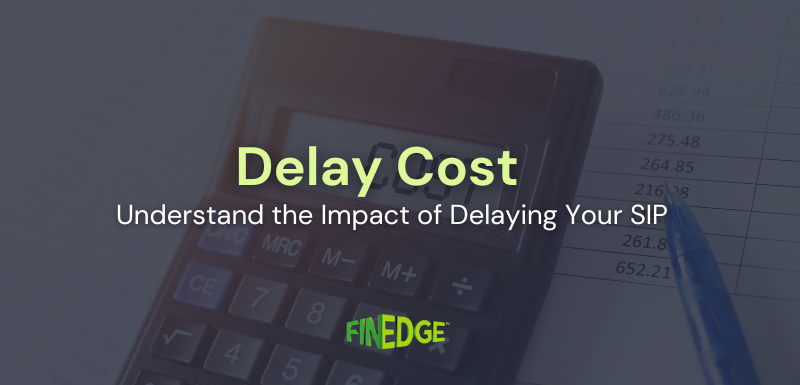What are the Different Types of SIPs? How to Use Step-Up SIP to Reach Your Financial Goals Faster
- Understand the four major types of SIPs: Regular, Step-Up, Perpetual, and Flexible.
- See how Step-Up SIPs can accelerate your financial goal achievement.
- Discover how to align SIP types with your income style and investing needs.
SIPs (Systematic Investment Plans) are a cornerstone of goal-based investing in India. But did you know that there’s more than one type of SIP? From the simplicity of Regular SIPs to the adaptability of Flexible SIPs, and the acceleration potential of Step-Up SIPs, there’s a strategy for every kind of investor. In this blog, we’ll explain the different types of SIPs and show you how a Step-Up SIP could help you reach your financial goals faster.
Regular SIP: The Foundation of Disciplined Investing
A Regular SIP allows you to invest a fixed amount in a chosen mutual fund at regular intervals—usually monthly. It’s simple, predictable, and ideal for salaried investors.
Example:
Divya invests ₹2,000 every month in a small-cap scheme for 5 years. Her investment terms (amount, frequency, duration) remain fixed.
Why It Works:
-
Encourages disciplined investing
-
Works well with monthly income
-
Aids in long-term wealth creation through compounding
Pro Tip
Use a goal-based SIP calculator to decide how much to invest. For instance, to accumulate ₹1 crore in 20 years at 12% CAGR, you'd need a SIP of ₹11,000/month. *12% is an assumed, not guaranteed, rate of return.
Step-Up SIP: Supercharge Your Wealth Creation
A Step-Up SIP allows you to increase your SIP amount periodically, either by a fixed amount or a percentage. This helps align your investments with salary hikes or business income growth.
(Source: ICICI Prudential Mutual Fund)
Two ways to Step-Up:
-
Fixed Increase: Add ₹500 to your SIP annually (₹10,000 in Year 1, ₹10,500 in Year 2...)
-
Percentage Increase: Increase SIP by 10% each year (₹10,000, ₹11,000, ₹12,100...)
Some AMCs let you cap the Step-Up either by SIP amount or by end date.
Real-Life Illustration:
-
Jaya starts with a ₹10,000 monthly SIP at 14% CAGR.
-
Regular SIP yields ₹1.17 Cr in 20 years.
-
Step-Up SIP (10% annually) yields ₹2.26 Cr in 20 years.
-
That’s ₹1.09 Cr extra without a lump sum!
Perpetual SIP: For the Long-Term Minded
A Perpetual SIP has no end date. You only choose the start date. Most AMCs set 2099 as the default end date.
Why choose perpetual?
-
Ideal for lifelong investing
-
Perfect for open-ended financial goals like wealth creation
-
Offers compounding benefits without worrying about renewal
You can pause or stop it anytime based on your needs.
Flexible SIP: Designed for Variable Incomes
A Flexible SIP lets you adjust the SIP amount, date, frequency, and number of instalments.
Best suited for:
-
Freelancers
-
Business owners
-
Self-employed professionals
Flexibility helps you invest in sync with your cash flows. Just remember to notify the AMC at least a week before the due date.
Choosing the Right SIP Type for Your Goals
There’s no one-size-fits-all SIP. The best SIP is the one that suits your income structure and financial goals:
-
Go for Regular SIP if you prefer predictability.
-
Choose Step-Up SIP to align with income growth and accelerate goal achievement.
-
Opt for Perpetual SIP for uninterrupted wealth creation.
-
Pick Flexible SIP if your income varies month to month.
What matters most is consistency and discipline. Over time, any SIP, if done right, can be a powerful tool for building wealth.
FAQs
Your Investing Experts
Continue Reading
Cost of Delay in Investment: Why Starting Early Matters
Many investors assume that postponing their SIP temporarily has a minor impact. In reality, the true loss comes from the compounding opportunity that disappears with every missed month. A consistent approach is far more powerful than trying to compensate later by investing larger amounts.
How to Cancel Your SIP Online: A Step-by-Step Guide
Stopping a Systematic Investment Plan (SIP) is simple but following the right steps ensures your cancellation request is processed smoothly without delays.
How to Build a ₹1 Crore Portfolio: A Practical Guide for Indian Investors
Reaching ₹1 crore isn’t about luck or timing, it’s about discipline, consistency, and the patience to let compounding work in your favor.


.png)
